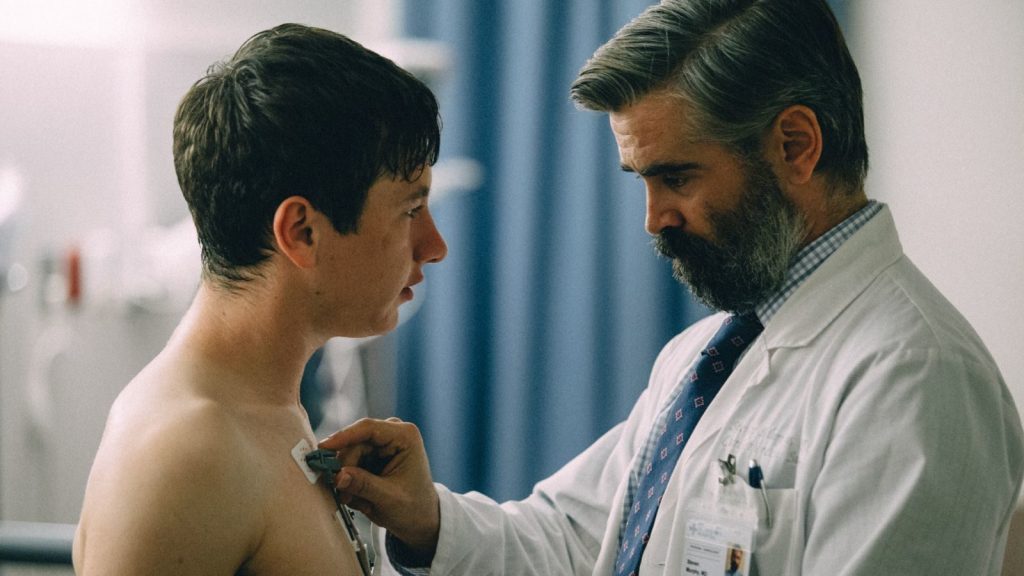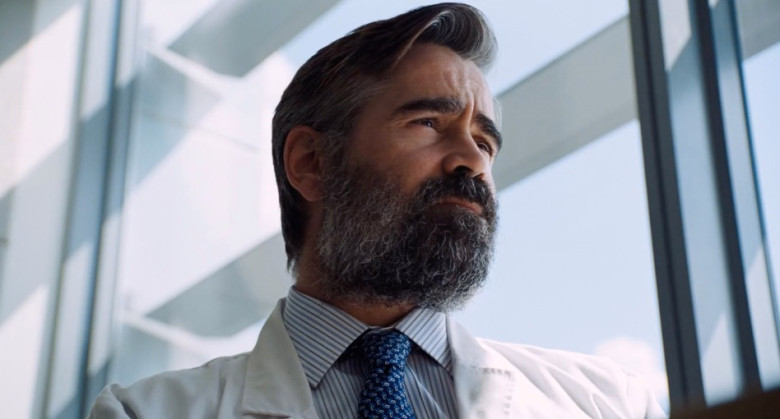Talking of a “film moment,” which includes the “ideal combination of style, story, and feeling” of the whole film in one scene, one can’t help but think of the powerful opening scenes. I have a particular interest in the openings scenes of all movies, as those sequences set the mood, hint the general perspective, and foreshadow what aspects will be highlighted for both the setting or the character. Yorgos Lanthimos’ The Killing of a Sacred Deer has a distinct opening scene, which I remember being stunned when I saw it for the first time. The main character is positioned in a god-like position in the very first minutes, only to tear him down the rest of the film.
A year before The Killing of a Sacred Deer, we saw the fetishization of a surgeon and the healing hands in Marvel’s Doctor Strange. The opening of the film is a collection of shots focusing on Dr. Strange’s hands and has highly pornographic aesthetics. On the other hand – no pun intended, Lanthimos restrains from such salient expression and adopts a style in which less is proven to be more.

The first forty-seconds of the opening scene of The Killing of a Sacred Deer are complete darkness, directing our perception to be entirely concentrated on the music, thus allowing all our cells to be filled with the power of the holy chant. Visually, there is nothingness. Then comes life. As the music accelerates, the black screen cuts to the extreme close up of a beating heart. Within the frame, there is the essential element that pumps life in all of us. The camera slowly moves away, yet is still capturing the heart in a close up, to reveal the setting to be an open heart surgery. The doctors’ hands enter and exit the frame sporadically, whereas the heart never stops beating rhythmically. The camera angle is a birds-eye-view shot, which is mostly associated with the omniscient, or the all-knowing point of view. As this is also the doctors’ point of view, Lanthimos locates the surgeon in a god-like position in this very first scene.
The musical score that accompanies the scene is Franz Schubert’s F minor D. 383,” Jesus Christus schwebt am Kreuze,” which means “Jesus Christ hangs on the Cross.” The song is on the killing of the Christ, thus refers to the ending of the film. At the same time, as the surgeon is introduced in a holy position, his healing “powers” are likened to a miracle not far from the Christ’s. The music is perfect for the scene; it reflects exactly where the spectator is desired to be positioned towards the main character so that the filmmaker can debunk what we have been believing not only throughout the film but also in real life.
The next shot after the title is of the charismatic surgeon, played by Collin Farrel, taking off his apron, gloves, and equipment. He is a human, not much different from the rest. This is his job. His “costume” which puts him in this sacred position go to the trash can after his job is done. Suggesting, all this ecstasy created through the surgeon’s holiness will soon end up in the trash.

Yorgos Lanthimos is known for his “weird” work associated with the Greek Weird Wave. While shooting films on a minimal budget, the director puts his criticism on authority relations in environments that seem to be far from our reality. However, within its historical context, the film seems to be questioning the elements of our everyday reality, which in this case, is the contemporary belief in god. In today’s “developed” world, the most innocent is still getting harmed, the sacred is killed, and the values we depend on for so long seem to be failing us. The director invites us to question these norms, and he ably does this in a few frames.
